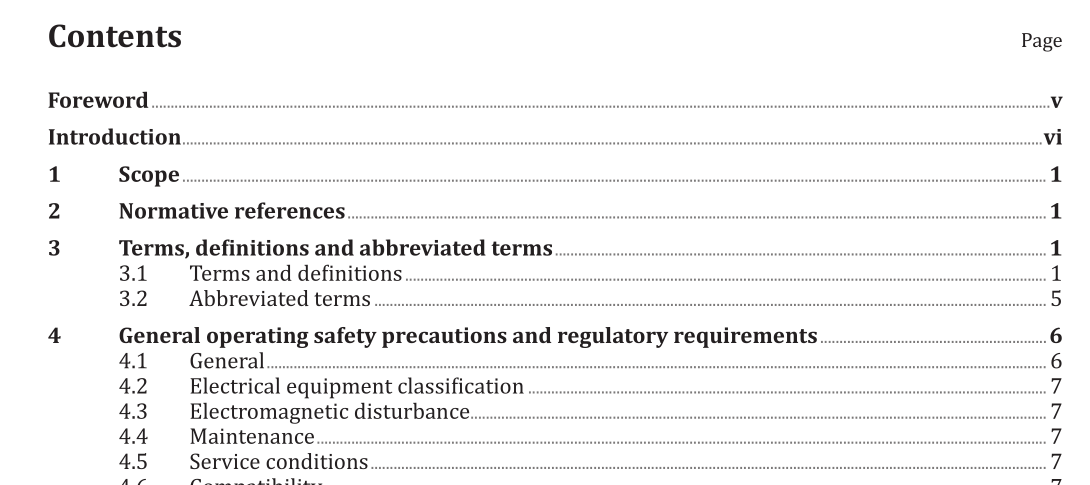ISO 10976:2015 pdf download.Refrigerated light hydrocarbon fluids — Measurement of cargoes on board LNG carriers
1 Scope
This International Standard establishes all of the steps needed to properly measure and account for the quantities of cargoes on liquefied natural gas (LNG) carriers. This includes, but is not limited to, the measurement of liquid volume, vapour volume, temperature and pressure, and accounting for the total quantity of the cargo on board. This International Standard describes the use of common measurement systems used on board LNG carriers, the aim of which is to improve the general knowledge and processes in the measurement of LNG for all parties concerned. This International Standard provides general requirements for those involved in the LNG trade on ships and onshore.
2 Normative references
The following documents, in whole or in part, are normatively referenced in this document and are indispensable for its application. For dated references, only the edition cited applies. For undated references, the latest edition of the referenced document (including any amendments) applies.
ISO 8310, Refrigerated hydrocarbon and non-petroleum based liquefied gaseous fuels — General requirements for automatic tank thermometers on board marine carriers and floating storage
ISO 8943, Refrigerated light hydrocarbon fluids — Sampling of liquefied natural gas — Continuous and intermittent methods
ISO 18132-1, Refrigerated hydrocarbon and non-petroleum based liquefied gaseous fuels — General requirements for automatic tank gauges — Part 1: Automatic tank gauges for liquefied natural gas on board marine carriers and floating storage
IEC 60533, Electrical and electronic installations in ships — Electromagnetic compatibility
EN 1160, Installations and equipment for liquefied natural gas — General characteristics of liquefied natural gas
IACS, Unified Requirements E10
3 Terms, definitions and abbreviated terms
3.1 Terms and definitions
For the purposes of this document, the following terms and definitions apply.
3.1.1 absolute pressure
total of the gauge pressure plus the pressure of the surrounding atmosphere
3.1.2 aerating
<context of preparing a tank for entry> introduction of fresh air with an acceptable dew point into the tank to purge inert gases and to increase the oxygen content to approximately 21 % of volume so as to ensure a breathable atmosphere
Personnel involved in the handling of liquefied natural gas should be familiar with its physical and chemical characteristics, including potential for fire, explosion, cryogenic burns (frostbite) and reactivity, as well as the appropriate emergency procedures. These procedures should comply with the individual company’s safe operating practices, in addition to local, state and federal regulations, including those covering the use of proper protective clothing and equipment. Personnel should be alert in order to avoid potential sources of ignition. SIGTTO publications Liquefied Gas Fire Hazard Management and Liquefied Gas Handling Principles on Ships and in Terminals should be consulted to ensure familiarity with the characteristics and hazards of LNG, all fire protection and firefighting equipment on board LNG carriers along with the appropriate fire hazard management plan.
ISO 10976:2015 pdf download
